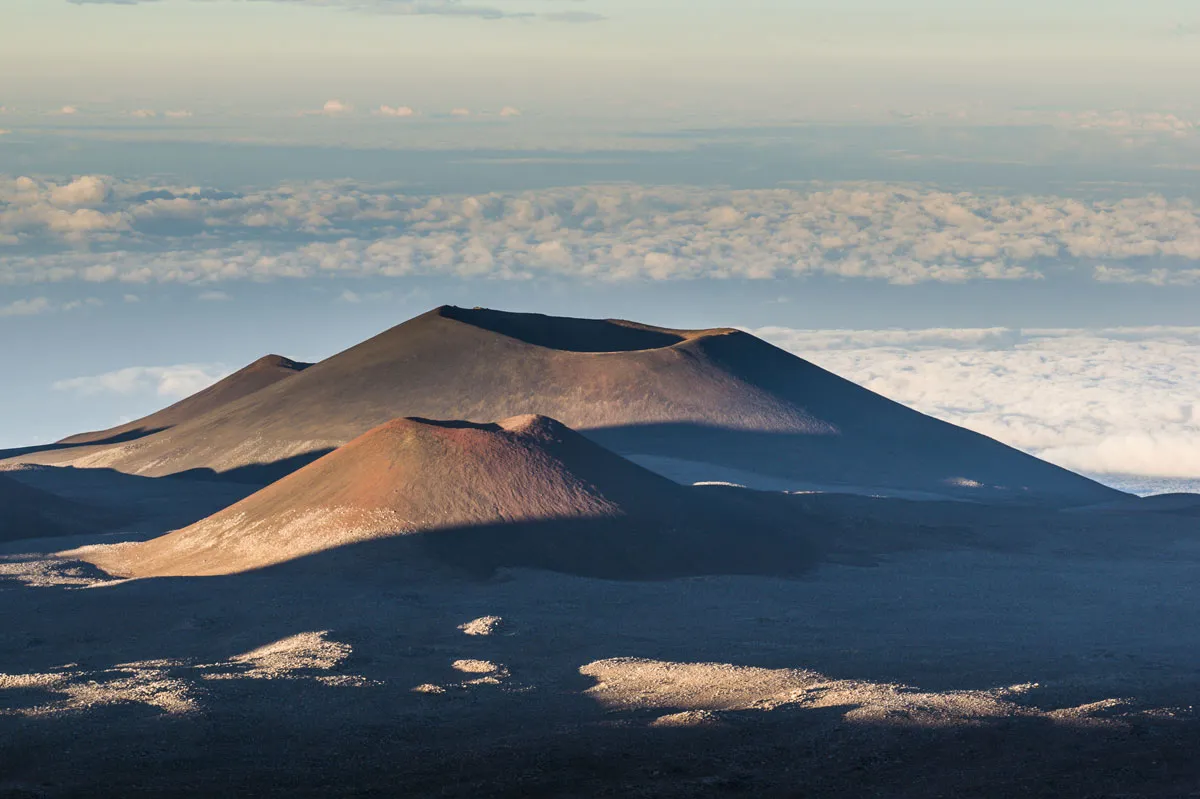Traditional knowledge tells us that Mount Everest is the tallest mountain in the world – but the truth is a little more complicated.
Depending on how you measure a mountain, Mount Everest might not be the tallest in the world after all. There are a couple of other mountains that would like to have a word and are both able to claim the record on a technicality. If you’re looking for a good old ‘um, actually’ fact, you’re in the right place.
Adventure down the page below to find out about Mauna Kea – the dormant volcano in Hawaii – and to see why it can claim to be the tallest mountain in the world.
Is Mount Everest the world’s tallest mountain?
Mount Everest is the world's tallest mountain above sea level. Its peak is 8,849m above the ocean, making it the piece of land at the highest altitude on Earth. Technically, however, it is not the tallest mountain in the world, if you consider mountains that begin below sea level.
However, Mount Everest is easily the mountain with the tallest peak that you can climb the entire way (but we don't recommend it – over 300 lives have been lost attempting to reach its summit).
What is the world’s tallest mountain?
The tallest mountain in the world from base to peak is Mauna Kea, a long-dormant volcano in Hawaii, USA. In total, it is approximately 10,205m (33481 feet) in height, taller than Mount Everest's 8,849m (29032 feet).
Over half of Mauna Kea is underwater in the Pacific Ocean. Around 6,000 metres of the mountain is under the sea, with 4,205 metres above sea level. In total, Mauna Kea is around 1.4km taller than Everest.

Mauna Kea has been inactive for around 4,500 years, but the United States Geological Survey claims that it “is likely to erupt again.” Thanks to being home to the largest astronomical observatory on Earth, though, the “sensitive astronomical telescopes… would, as a by-product of their stargazing, detect minute ground tilts possibly foretelling a future eruption".
Based on measuring from base to peak, Mauna Loa, an active volcano in Hawaii is the second-tallest mountain on Earth, with a total height of 9.17km (5km underwater).
It all depends on how you measure, though, as there is a third mountain which could be considered the tallest in the world: Mount Chimborazo in Ecuador. This is thanks to the Earth not being perfectly spherical and the equator bulging outward.
Located in the Andes in Ecuador, Chimborazo is another inactive volcano with a peak of 6,310 metres above sea level. Thanks to it being only one degree south of the equator, however – closer than any other mountain – Chimborazo can technically claim to have the peak closest to the Sun.
This means that, if measured from the centre of the planet, Chimborazo can claim to be the tallest mountain on Earth. Typically, though, we don’t measure from the centre of the planet, instead choosing to go from either above sea level or from base to peak.
What is the biggest mountain in the Solar System?
The tallest mountains on Earth don’t come close to comparing to the tallest mountains in the Solar System. Olympus Mons on Mars tends to take home the record for the tallest mountain in the Solar System but the biggest could well be the Rheasilvia peak on the Vesta asteroid.
Olympus Mons is about 21.9km tall from base to peak, making it just over twice as tall as Mauna Kea. Given the difficulty of measuring such things on other planets, however, it might not be the tallest in the Solar System.
The Rheasilvia peak within the crater on the Vesta asteroid is thought to be potentially marginally taller at around 22.5km high from base to peak.
Read more:
